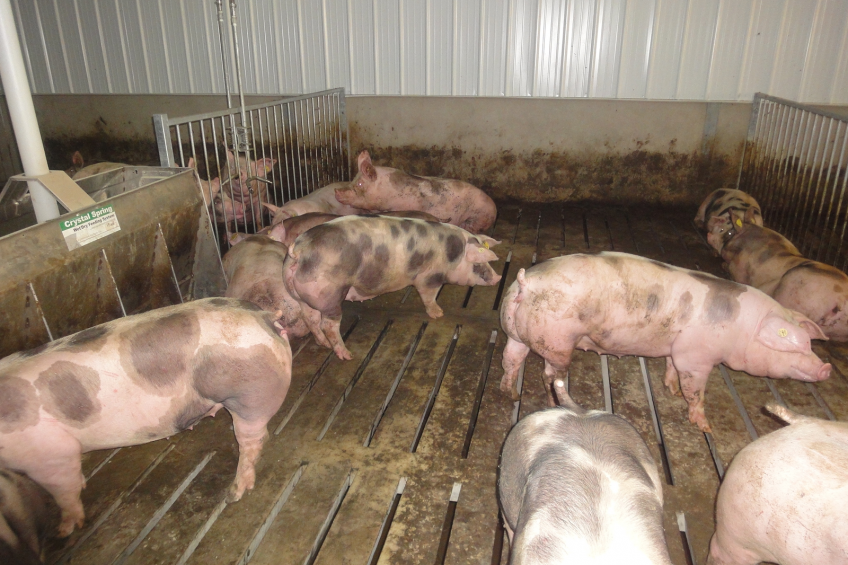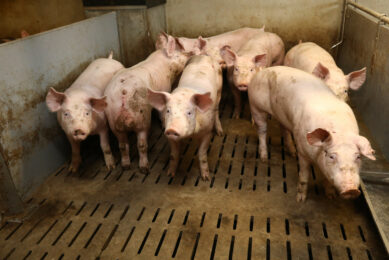Indonesian feed giant’s new pig operation in Vietnam

Indonesian feed giant Japfa Comfeed spread its wings into South East Asia. In 2012 they partnered with Dutch-based breeding company Hypor to establish Japfa Hypor Genetic Company. Pig Progress took a look at the nucleus farm in Binh Phuoc province.
By Apisit Buranakanonda, editor, Feed & Livestock Magazine, Thailand
Japfa got its start in Vietnam in 2008 with a 300-sow, open-housed operation. The company ordered its first shipment of Hypor GGP sows to test the market two years later. The results were satisfactory and the breeding herd has grown since from 900 head to 24,000.
Japfa and Hypor agreed on a joint venture in April 2012 to start the Japfa Hypor Genetic Company – Hypor supplying the breeding stock and managing the breeding programme; Japfa being in charge of sales and marketing in Vietnam. In September 2012, JHGC imported the first 700 head of breeding stock from Canada and France with a total value of more than $1.5 million.
Japfa and Hypor see plenty of room to grow, as so far, Japfa secured only a small share of the Vietnamese market. Vietnam has 4 million sows, but only 15% or roughly 600,000 sows are from imported breeds. In addition, next to strong local demand, Vietnam’s competitive level of production costs will be a big help in case the ASEAN free trade zone takes effect.
Dr Kuswanto Sukojo, Japfa senior vice-president, believes the market potential is immense. “Farmers can select and run their own breeding programme. But we can do it more precisely and achieve genetic improvements more quickly, especially for profitable traits such as prolificacy and conformation. Our target is medium-sized farms with over 120 sows. We want customers to grow together with us through excellent gene-tic improvement.”
The Japfa three-way cross product offers average daily gains of 815 g from 17 kg at the nursery to 107 kg market weight. Japfa products also offer superior mortality rates, leaner backfat, and a feed conversion rate below 2.48. The long-term plan includes having 72,000 sows by 2015 and 140,000 sows by 2020.
Design concept
The 700-sow farm, worth US$5 million, is located on a 28-hectare site, north of Ho Chi Minh City. Forty GGP boars made up of four purelines each containing ten pure line boars will be used via artificial insemination.
The two dam lines consist of Hypor Large White and Hypor Landrace. The sire lines will be the Hypor Maxter – a halothane-free Piétrain breed offering high leanness and fast growth – as well as the Hypor Magnus – a fast growing, lean and very feed efficient Duroc.
The nucleus farm consists of boar house, AI laboratory, breeding-gestation house, five farrowing rooms, eight nursery rooms, final test and finisher houses, a back fat and muscle depth test area and a gilt and boar developer house.
The AI stud has two semen collection pens. The semen will be submitted to the AI lab through double windows. The AI lab uses a separate entrance, which means lab workers will have no contact with the boar stud.
The farm also has a boar and gilt holding barn which is used for selecting young GGP animals for replacements. It holds 50 boars and 80 gilts in the intermediate stage between testing and production. The selected animals will be reared in the holding barn for five to six weeks, after that the GGP boars will go to the AI stud area and the gilts to the breeding area.
Boars and gilts are selected to get the best replacement breeding stock every week. The animals will be tested for back fat thickness and muscle depth at five months of age, bodyweight 110-115 kg.
Breeding and gestation
The breeding and gestation barn has 500 stalls and 12 pens for the gilts and sows. Farrowing units have five rooms with 28 farrowing crates, giving each a capacity of 28 farrowings/ week. The weaned piglets are subsequently moved to the nursery unit which contains eight nursery rooms with a holding capacity of 330 piglets/ room. The design is based on a weekly production cycle able to supply over 320 weaned piglets/week.
Japfa will import fresh semen from France and Canada. Farrowing and nursery units use cross ventilation with gentle air movement. This avoids the risk of creating a chilling effect for the young animals which translates into fewer respiratory problems and better performance.
Biosecurity
The farm has a very strict biosecurity protocol. The facility will bring in all the farm’s animals at one time. To eliminate the risk of disease, the site is located in an isolated area with no other pig farms within a 5 km radius.
The farm’s feed truck picks up at the feed plant. Through a truck screwing system, the feed is delivered from outside the permit wall into bins that are located inside the permit wall. Delivery trucks are cleaned and disinfected at a cleaning depot, at 5 km distance.
Visitors are required to pass a minimum two-day quarantine period before entering the farm. They must shower three times, first when they enter the quarantine area, secondly when entering the staff’s living quarters, and thirdly when they enter the farm’s restricted area. Each area has designated different coloured clothes and footwear.
A central kitchen is set up to serve people in the quarantine area, the workers’ quarters and the restricted area. Food is delivered through windows to all the three areas.
Delivery vehicles are cleaned, disinfected and dried at a cleaning depot located 10 km away from the farm. The trucks are disinfected a second time before picking up animals at a load-out ramp. No trucks are allowed to enter the farm.
Future
The first GP offspring and terminal left the farm in August 2013. Ideally, the sows are used for the expansion of their own breeding herd in Vietnam – any surplus will be sold. With ample land and infrastructure in place, expansion for the next phase will be faster and cheaper.
Japfa Hypor Genetic Company
* Farm type: Nucleus
* Number of animals: 700 sows; 50 boars; 80 gilts
* Dam lines: Large White and Landrace
* Sire lines: Piétrain and Duroc
* Output: 350 GP gilts/ month
[Source: Pig Progress magazine, 2013]











